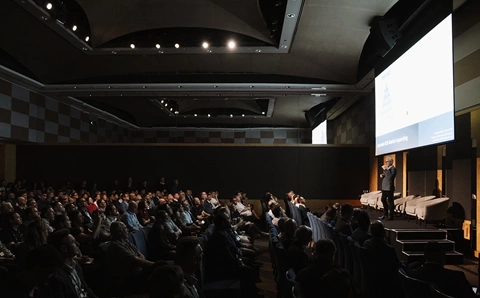Are video cameras equal to compact stills cameras?
Dual use cameras
Lately in the magazine and online, we've omitted Sanyo camera reviews from some of our lab reports. There's a reason for that, though: while Sanyo's website still shows digital compact cameras, according to a spokesperson for the company it's "no longer actively marketing" its traditional digital camera range. And that's where things are starting to change.
Instead, the company is pushing its Xacti range of video cameras as dual-use: capable of acting as both a still and video camera.
The range has always been able to take still shots - as have most video cameras - but it's only now that they're being touted as equally capable on both fronts.
In particular, the Xacti VPC-HD2000 takes 8-megapixel stills. And despite our constant harping on to anyone who'll listen that megapixels don't matter, it's a compelling enough statistic for us to want to compare the stills from the Xacti with those from the compacts in this Labs.
HD video cameras
The flipside of this development is digital compacts that want to be HD video cameras. The Canon Ixus 100 IS, Panasonic DMC-FX40 and Samsung NV100HD on test this month all shoot HD 720p video at 30fps. That's not as impressive as the Xacti's 1080p at 60fps, but it's still better (at least in raw output resolution terms) than any camcorder could manage a few years back.
The major downside to almost all compact cameras with a video mode is twofold: you can't use the zoom while recording because the noise of the motor gets picked up by the internal microphone; and autofocus is inactive for the same reasons.
Those restrictions obviously don't apply to the Xacti, whose internals have been designed for zoom and autofocus mechanisms not to be audible.
Focal range and zoom lenses
Focal-length range needs are different too; most of the time a wide-angle lens is more useful than a super-long zoom range on a compact, but for a video camera the reverse tends to be true.
Thus, the Xacti's equivalent focal-length range is 44mm to 710mm - essentially a super-telephoto zoom. Cleverly, the Xacti's focal range in photo mode becomes a more camera-like 38-380mm; a schizophrenic trick a compact camera can't pull off.
But the wide end of that range barely qualifies as wide-angle in the company of compacts able to manage 28mm and wider.
Human perception of the quality of still and video images is different, and absolute lens quality is less important for a video camera. On top of that, video tends to be viewed at a distance; photos usually more close-up. So a video camera's lens simply doesn't need the resolving power of a still camera.
Looking closer at image quality
In particular, effects such as chromatic aberrations, which you'll rarely notice in a video camera, become horribly obvious in a still.
Looking at still frames from the Xacti, it's clear that just those types of limitations come into play. While initially impressive, view the still shots at full size - or more relevantly, print them out - and it's obvious the lens is more prone to colour fringing.
But with a CMOS sensor of 1/2.3in, noise is relatively well controlled, especially in low light. When it comes to the video abilities of the stills cameras, there really isn't much comparison.
The resolution may be high and the quality perfectly okay, but audio quality isn't a patch on the Xacti, and the lack of zoom and autofocus means you can't seriously call them a replacement for a camcorder.
On the compact cameras' side is their size. The Canon Ixus 100 IS is so small it could almost get lost in your pocket. To do the job of two devices, the Xacti is relatively big and not exactly the ideal device when you're in need of a snapper you can have handy at all times, ready to catch photo opportunities as they pop up.
But the killer for current dual-use cameras is the price. The Xacti VPC-HD2000 costs north of $650 inc GST, for which you could buy two Ixus 100s and still have room in your pockets.
So for now it looks like, despite the advances in technology, a standard compact is still your best bet for stills, and a dedicated video camera the best option for movies





.png&h=142&w=230&c=1&s=1)






.jpg&w=100&c=1&s=0)
_(8).jpg&w=100&c=1&s=0)









